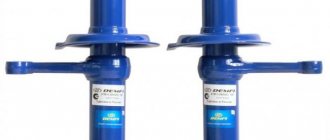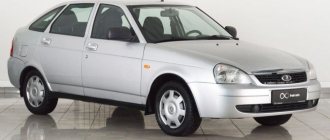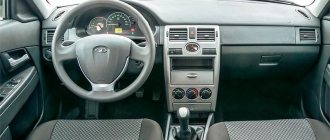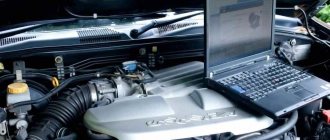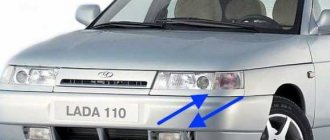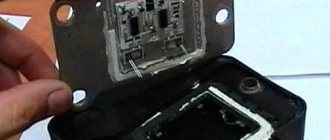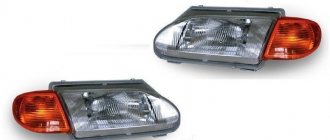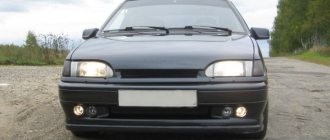Models VAZ-2110, and equally 2115, have proven themselves well during operation. Today, their production has been discontinued, and therefore those who wish will be able to purchase only a used car. The mentioned Lada models were produced around the same period, and therefore are similar in many ways. The demand for the 10th and 15th models is due to their low cost, ease of maintenance and availability of inexpensive spare parts. Often one of the cars becomes the first for a novice driver, and they often have the question: which one is better to buy? You will be able to make an informed choice after reading this article.
Main characteristics of 2110
The model in question is a front-wheel drive sedan with four doors. Its serial production started back in 1995. In fact, the car became a transitional link between the classic, beloved by many, “Zhiguli”, and the first sign of the new generation – Samara.
Unlike previous products of the Volzhsky Automobile Plant, produced back in Soviet times, the “ten” came out more modern and received, in particular, a hydraulic power steering. Additionally, VAZ has provided the possibility of equipping the Lada with a control unit. In some trim levels (above the base), electric windows have become available.
The car itself was finally discontinued in 2009 - it was then that the company switched to producing the Priora, created precisely on the basis of the 2110.
The vehicle dimensions are as follows:
- length – 4265 millimeters;
- width – 1680;
- body height – 1420.
The wheelbase size is 2492 mm.
Besides:
- the “ten” has a relatively high ground clearance (16.5 cm) and a weight of 1020 kilograms;
- The trunk of the medium-capacity model has a volume of 450 liters;
- The fuel tank holds 43 liters of 92 gasoline.
The car's power unit is not particularly powerful. A 73 hp engine was installed in the basic configuration. With.
The gearbox is 5-band, domestic and purely mechanical. The unit is quite imperfect - it knocks, is loose and does not work clearly.
The tenth model is capable of reaching a maximum speed of 165 kilometers. Acceleration to hundreds takes her 12.3 seconds. On average, a car spends 9 liters of gasoline per 100 km. The 2110's cabin seats 5 people, but the back seat will be quite cramped.
Model 2115
Samara is also a front-axle sedan produced by VAZ. In fact, the car became an updated version of model 21099. During the restyling process, the feed was radically changed. New ones have appeared here:
- luggage door;
- lanterns;
- spoiler with additional brake light.
The front end also did not escape updating - the designers adjusted the hood and fenders. More modern optics were installed on the car. At the same time, the bumper began to be painted to match the body, and the doors were equipped with decorative moldings. The changes also affected the electrical circuit (some components and instruments were added), as well as the interior.
Production of 2115 ended in 2012, when the Volzhsky Automobile Plant mastered the production of Grants.
Dimensions of the VAZ model in question:
- body height – 1420 mm;
- length – 4330;
- width – 1650.
The wheelbase size is noticeably smaller than that of the “ten” - it is 2460, but the trunk volume is exactly the same (450 liters). Samara became 10 kilograms lighter and received a higher ground clearance - 17 cm.
Despite the fact that the fuel tank remained the same size, the engine for the basic version turned out to be even weaker than that of the 2110 - 70 horsepower. Nevertheless, the maximum speed increased to 180 km, but acceleration to hundreds increased to 13.2 seconds.
The car also fits 5 people, and they will be much more cramped here than in the “ten”.
What do 2115 and 2110 have in common?
As you can easily see, the dimensions of both cars are approximately equal.
Moreover, the 10th model is wider, and the 15th is longer. The trunks have equal volume. The technical equipment, as well as the set of electrical equipment, are largely similar. In both cases, the door opening of the storage compartment is wide and makes it easy to load and remove very large loads.
The machines also have:
- good ECUs for their time;
- comparable motor power;
- identical fuel consumption.
If we talk about salons, then they are not much different. The finishing is made of cheap, creaky plastic and textiles of moderate quality. At the same time, the Samara’s instrument panel is more modern, whereas on the 10th model it looks almost classic.
Neither 2115 nor 2110 have such gadgets as:
- auto-locking system;
- air conditioner;
- heated seats, etc.
At the same time, it should be taken into account that since cars are now sold exclusively on the secondary market, their equipment may differ significantly from the factory one, because tuning is a favorite pastime for many owners.
Comparison results
When choosing between these two cars, you need to realize that they are almost similar, except for some nuances, the vehicles are quite reliable and easy to operate. If preference is given to a comfortable ride with a smooth ride, then you should take the “ten”.
When choosing speed and handling, you should consider buying the 2115, its handling will be a pleasure. Still, the choice will be influenced more by the personal preferences of the car enthusiast than by any individual characteristics.
Sources
- vchemraznica.ru/chto-luchshe-kupit-vaz-2110-ili-vaz-2115/
- ladaprofi.ru/novosti/chto-luchshe-kupit-vaz-2110-ili-vaz-2115.html
- zen.yandex.ru/media/zatonevkredit/avtomobil-za-100-000-rublei-vaz-2110-ili-vaz-2115-vybiraem-chto-luchshe-vziat-5c7b7cca595e2100affc2216
- drom.ru/compare/lada-2110-vs-lada-2115.html
VAZ-2110 and 2115 - differences
The VAZ model 2110 has a fairly low drag coefficient, which means that aerodynamics will save some gasoline. However, the speed indicator of 2115 is higher.
The body of the “ten” is distinguished by rounded shapes, and the wheel arches are hidden under it, which allows you to get rid of the splashes of dirt that constantly decorate the “15” in bad weather. On the 2110, approximately half of the body elements are additionally coated with zinc, which means they have more advanced protection against rust.
The hood of this model is wider and weighs more, because a layer of sound insulation is installed on it. It is fixed in the raised position with gas stops, whereas on Samara a regular rod is installed, just like on the classic.
Good gaskets are installed under the 2110 engine, which significantly reduce vibration levels.
There are also several nuances regarding the interior. As the owners of Samara note, it is very difficult to get inside without getting your clothes dirty in the mud. The problem is that the car has very low sills, which constantly get dirt. Tens do not have such a drawback - there is a special seal here.
What to look for when choosing between these cars
First of all, one very important point should be emphasized. There is simply no objective answer to the question of which is better to choose when buying – a VAZ-2110 or a VAZ-2115. It is possible to describe certain advantages and disadvantages of these models, including in relation to each other, but when making such a purchase, a potential car owner is also guided exclusively by his own criteria. Probably, I have repeatedly encountered situations when a car that looks good and has good characteristics does not inspire confidence for some reason. Of course, the criterion “the soul does not lie” is clearly not objective, but motorists are accustomed to trusting their inner voice.
So, let's look at specific examples, that is, let's try to determine what the difference is between a “ten” and a “tag”, and which of them can be called the best, albeit with a certain stretch. The first thing that catches your eye when examining a car in the first place is, of course, its exterior. Everyone probably knows that the “tag” is a restyled version of the Samara – VAZ-21099. The designers managed to modernize the car, including by installing new optics and a radiator grille. Added dynamism and spoilers in combination with moldings. Nevertheless, under all this the outlines of the good old “ninety-nine” are perfectly discernible.
However, the appearance of the “ten”, especially in the stock version, is also far from perfect. The car reminds us that it appeared in the last century.
However, in both the first and second cases, everything depends purely on individual preferences. Some people like the “tag” because it seems more dynamic, while others, on the contrary, choose the “ten” purely visually.
These models have the following undeniable advantages:
- relatively low price;
- inexpensive maintenance, including repairs;
- unpretentiousness.
Reliability is a slightly different matter. Here the situation is more like a lottery, that is, depending on your luck. Additionally, both vehicles are front-wheel drive and do not have power steering. Accordingly, their handling is approximately the same. On the Internet you can find many reviews praising one model over another, but all this is nothing more than subjective feelings.
The interior of the cars, generally speaking, can also be called approximately the same. However, many people like the “tag” panel more than the stock unit with “tens” instruments and indicators. However, here too, first of all, everything depends on individual preferences. In addition, the minimum required set of switches is important. Everything is very simple and clear, even on an intuitive level.
Both cars lack ABS, air conditioning, climate control - devices that have long been installed on many of their foreign “classmates”. On the other hand, it is precisely because of this that the “ten” and “fifteen” are distinguished by such affordable prices and unpretentiousness in everyday use. At the same time, both models have an on-board computer that copes with its tasks quite well.
All engine options that are installed on these models can provide very tolerable dynamics with acceptable fuel consumption. Don't forget about one more, very important point. Both cars are very unpretentious in terms of fuel quality. If for large cities this, in fact, does not matter at all, since high-quality gasoline can be found without difficulty, then somewhere in the outback the situation is completely different.
VAZ - 2110 or 2115?
Good day everyone!
Then the thought flashed about purchasing a newer car. Among the options I am considering our buckets 2110 and 2115. So please ask about Nexia, Lanos or Accent, etc. don't write. I take a car both for family and for work.
Anyone who has had experience with these cars, please describe the pros and cons. I don't care about appearance. Specifically interested in: engine, chassis, handling, comfort. And also reliability, which is cheaper and more convenient to repair at home
.
Thank you in advance!
Answer to the question
- Definitely 2115 is the most successful release from AvtoVAZ
- If after 99 you want something new, then definitely take the ten. Fifteen is a restyling of the ninety-ninth. The same egg, only in profile. I haven’t owned a ten myself, but I have experience owning a Priora (restyling ten). The Priora (and the Tens, respectively) have clear advantages over the Samara - a more spacious interior, more adequate performance at speed (due to better weight distribution and greater weight), greater resistance to corrosion, the presence of modifications with a 16-valve engine (no need there will be nothing to farm), lower fuel consumption and better speed characteristics (acceleration, maximum speed) due to aerodynamics, improved interior heating. In terms of maintainability, the dozen are no worse than Samara - you can do everything if you have direct hands. Therefore, if you decide, take the 2110 with the gearbox and you will be happy - for family and work it will be a completely suitable option)).
- 10 ku 16-valve. it was paired with a 16 valve engine from the factory, which means that the receiver will not rest against the TV, and the advantages of 16 valve engines are not worth describing at all, and in general, the 10 is better in everything, even its streamlined appearance - IMHO
- A friend had a 12ka. It seemed to me that the interior was even more cramped than in 99. But there is actually more space under the hood. When I was repairing the two-wheeler, I didn’t like the fact that the brake and fuel lines go straight along the bottom (and in Samara they go through a tunnel above the muffler), and they are also covered with a plastic protection, in which the dirt got clogged, as a result, all the pipes rotted in one place. There was also a problem with the stove, and the damper motor and control unit were quite expensive.
After 12k, a friend took the Grant in the poorest configuration, but was most pleased with it, the trunk and interior were spacious. We practically did nothing to it except change the oil. pads, filter.
Granta, in my opinion, is the best option for family and work. I drove it myself with an 83-horsepower engine, it pulls much better than my 99, and this engine (11183) does not bend valves when the timing belt breaks - this is a big plus.
- We had a 15ka with a 16 valve engine. They installed electric power steering, suspension boosters, racks, etc. engine mount, improved the heater, installed a cabin filter adapter from 11, etc. Of course, this one will be more interesting than 10ka. 15ka is more informative, higher. I will say one thing, Samara needs to be improved. Of course, the build quality of recent years (2010 - 2014) - alas, we had a 2006, in my opinion they are more reliable.
- 14 This is the same as 9; 13-8 and 99-15 is the same crap, only the new generation has thinner metal and rots faster than our old women of the 90s who even give a head start to 2000. 12; 11 and 10 are no better than the same crap just in a different wrapper! Of all the things you are considering, you can only take 11, and now it’s hard to find one in decent condition! Well, it’s also worth the price and these 12-compartment cars are more well preserved, well, they’re really rare and damn expensive.
- Tens and Samara-2 make approximately the same noise. The Samara handles better, a dozen cars with similar engines have a higher top speed due to aerodynamics, and at these speeds it stands a little more confidently on the road. Units that are purely 2110 have a weaker design, IMHO. The reliability of the gearbox is below 100%, it turns on worse. If we compare specifically 2110 and 2115, then in a similar condition the 10 is more liquid and its trunk is larger) I’m now in a similar torment between the 4 and the 10))
- In fact, the tag will be like your 99ka, only with a different interior. But if you really want something new, then take a ten or a 12). But for family and work, it’s generally better to look at 2111). They all work pretty much the same way.
Driver safety
The advantage of the 10th model in terms of safety will be obvious. Because the power structure of the car is much stronger due to powerful pipes mounted in the doors. In particular, this was confirmed by frontal crash tests. Seat belts are also reliable. During the crash test, the 14th model had one unpleasant property: the bumper simply shatters from an impact, which is fraught with complications for those sitting in front of the car.
Attention. The aluminum beam that stood in its place before was even more reliable.
Therefore, when choosing between a VAZ 2114 or a VAZ 2110, you should definitely take into account the priority of safety.
Salon and its contents
In addition to the body, the interior has also been updated, and in particular the usability of instruments and control keys has improved. Depending on the configuration, the shape of the torpedo changed, which is quite surprising. In the basic and medium versions, the dashboard opposite the passenger was flat, but in the “luxury” category there was a convenient niche for things. A nice addition to the new torpedo was good assembly - the panel was fastened well, there were no backlashes and there were no unnecessary squeaks, rattles or other rarefaction sounds when driving. It is worth noting that this car has an on-board computer with a fairly fast processor; it performs all the necessary functions at 5/5.
The steering wheel can be adjusted according to the angle of inclination, which is a bit surprising for our car industry; there is a large “emergency light” button on the steering column, it’s hard not to get hit. The basic configuration provides only mechanical windows, but starting from the middle level, the driver and passenger can use electric windows.
In standard and medium configurations, they use inexpensive fabric and fillings; you can’t do without covers; they can’t stand abrasions. But the “Lux” equipment pleases with velor upholstery of the seat and door panels.
